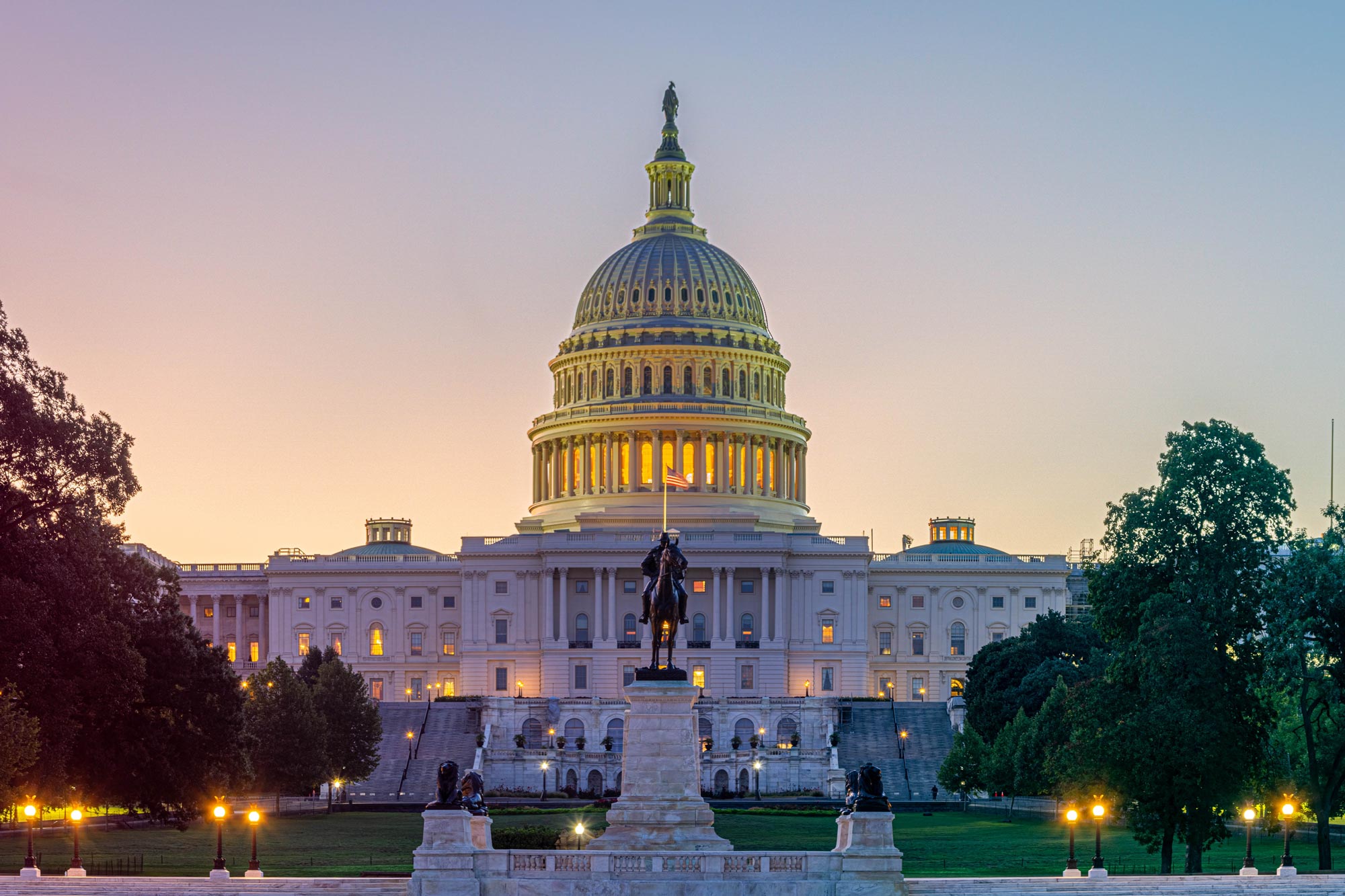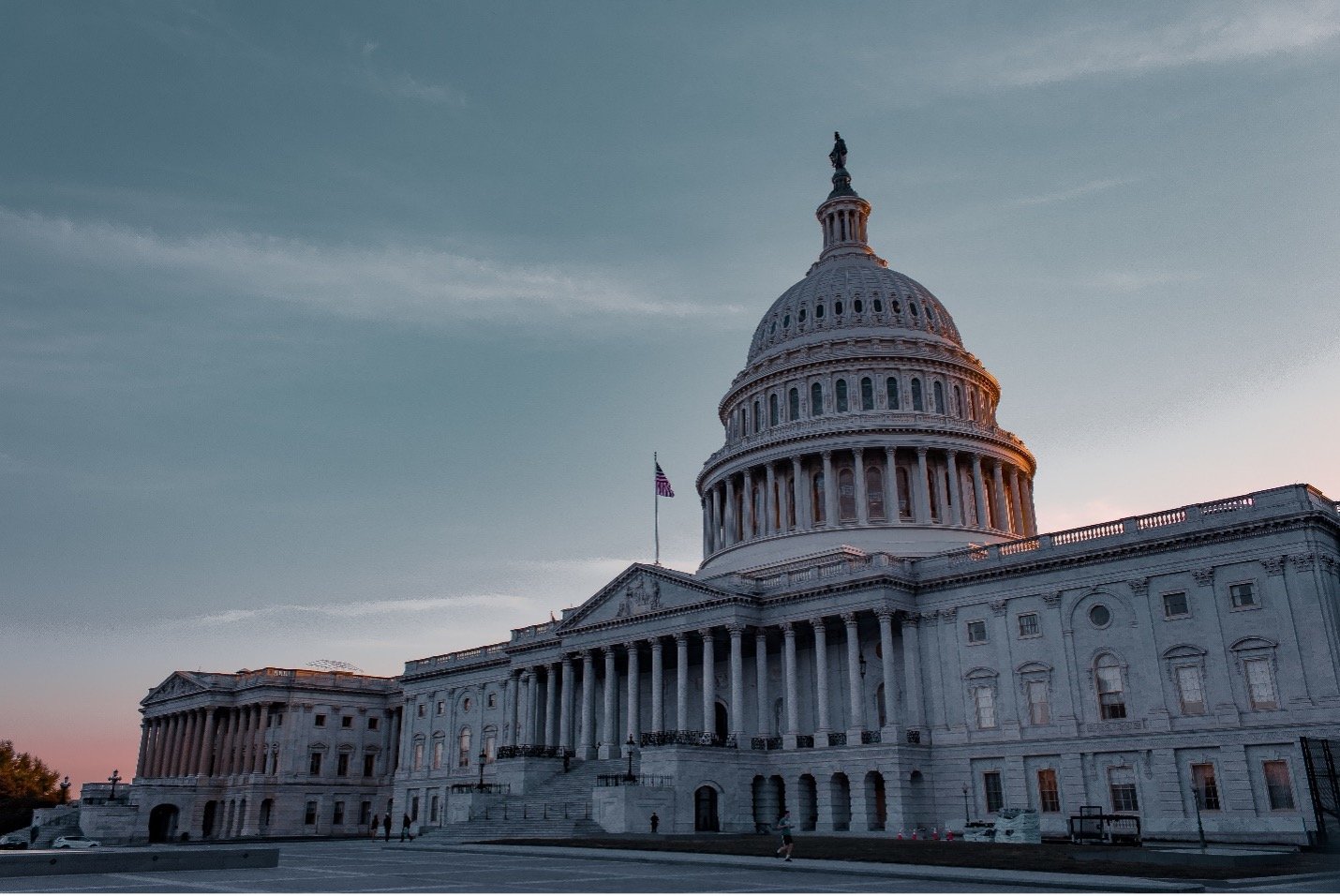One Big Beautiful Bill Act: What Government Contractors Should Know

Key Details: The passage of H.R.1 – The One Big Beautiful Bill Act (OBBBA) introduces one of the most comprehensive tax overhauls since the Tax Cuts and Jobs Act (TCJA), with significant implications for businesses across all industries. For government contractors, these changes carry added complexity due to the highly regulated nature of federal contracting, particularly around subjects such as labor classifications, indirect cost recovery, and compliance with various federal guidelines.
This article breaks down the most relevant portions of H.R.1 for government contractors and outlines what steps businesses should take to navigate the legislation while staying compliant with federal contract requirements. Contact us if you have questions or would like to schedule a consultation on what H.R.1 means for your business. We’re here to help you make the most of these updates.
R&D Expensing Restored
For government contractors engaged in activities such as engineering, defense technology advancement, or software development, research and development (R&D) costs often represent a major portion of business expenses. H.R.1 reintroduces immediate expensing for domestic R&D—offering a welcome opportunity for contractors to reduce taxable income and improve near-term cash flow.
Under prior law, businesses were required to amortize R&D costs over five years for domestic research and fifteen years for foreign research beginning in 2022. This treatment increased businesses' federal taxable income and disrupted cash planning for firms with significant innovation expenses. While foreign R&D expenses must still be amortized, H.R.1 restores the ability to fully deduct domestic R&D expenses in the year incurred, beginning with the 2025 tax year.
The following are examples of activities that would qualify for the deduction:
- Independent R&D (IR&D) projects.
- Development or enhancement of new technologies, products, or intellectual property.
- Designing, testing, and programming new software.
- Streamlining manufacturing processes to improve efficiency and reduce costs.
- Creation of new business processes through automation or new technologies.
Small businesses—those with average gross receipts of $31 million or less—may also benefit from retroactive relief. These businesses have two options:
- Amend Prior Returns (2022–2024):
File amended returns for 2022-2024 to expense previously amortized domestic R&D deductions by July 4th, 2026, or take catch-up deductions as Sec. 481(a) adjustments going forward. Amending prior business returns would include amending shareholder returns as well. - Claim Remaining Deductions in 2025/2026:
Elect to deduct all remaining unamortized domestic R&D expenses from 2022–2024 on your 2025 tax return or split the deduction between 2025 and 2026.
Larger contractors (above the $31 million threshold), while not eligible to amend past filings, may still deduct any remaining R&D amortization beginning in 2025.
Government contractors with eligible R&D activities are encouraged to review the updated expensing rules under H.R.1, assess their historical treatment of R&D costs, and determine whether they qualify to amend prior-year returns or take advantage of new deduction options available in 2025.
SALT Deduction Cap: Expanded Relief for GovCon Owners
The state and local tax (SALT) deduction is a deduction individual taxpayers can take on their federal return for taxes paid at the state and local level. This provision greatly impacts pass-through government contractors, especially those operating in high-tax jurisdictions such as Maryland, Virginia, and Washington, D.C.
Previously capped at $10,000 per year under the TCJA, the SALT deduction limit restricted the ability of business owners to deduct state and local income or property taxes on their federal returns.
Beginning with the 2025 tax year, H.R.1 increases the SALT cap to $40,000 for most filers and $20,000 for married individuals filing separately, effective through 2029. The new cap is also indexed for inflation and includes a phase-down for taxpayers with Modified Adjusted Gross Income (MAGI) above $500,000, but it will not drop below the original $10,000 limit. Unless extended, the cap will revert to $10,000 in 2030.
H.R.1 also keeps Pass-Through Entity Tax (PTET) regimes, including options for Specified Service Trades or Businesses, fully available. Pass-through entities can continue to use these state-level workarounds as valuable planning tools, combining them with the enhanced federal cap to maximize overall tax efficiency.
For firms with multi-state operations or contracts that create complex nexus issues, these adjustments provide temporary but meaningful planning flexibility.
Bonus Depreciation: Permanent 100% Deduction
Government contractors that invest in items such as equipment, technology infrastructure, and leasehold improvements will benefit from the permanent reinstatement of 100% bonus depreciation under H.R.1. This provision allows businesses to fully deduct the cost of qualifying assets in the year they are placed in service, rather than depreciating them over time. Effective for property placed in service on or after January 19, 2025, this update reverses the prior phase-down.
For contractors, bonus depreciation can be especially valuable for:
- Upgrading IT systems and hardware used for cybersecurity or CMMC compliance
- Purchasing tools, vehicles, or machinery
- Renovating leased office or warehouse space
Government contractors should discuss with their advisors the potential impact of bonus depreciation on their tax returns and financial statements.
Overtime Pay Deduction: Classification Risks for SCA Contractors
H.R.1 introduces a temporary federal tax deduction for overtime wages, allowing employees to exclude certain overtime earnings from taxable income between 2025 and 2028. This provision poses unique compliance concerns for government contractors, particularly those subject to the Service Contract Act (SCA).
To qualify for the deduction, employees must be non-exempt under the Fair Labor Standards Act (FLSA). The deduction is capped at $12,500 per taxpayer or $25,000 for joint filers, with a gradual phase-out beginning at $150,000 of Modified Adjusted Gross Income (MAGI) for single filers ($300,000 for joint filers).
For contractors, especially those with SCA-covered employees, this provision requires additional consideration:
- Lower wage or non-exempt employees who earn overtime could benefit from this deduction. However, attempts to restructure hours worked to maximize the deduction may result in noncompliance with wages and hour rules.
- SCA worker classifications are contractually binding, and efforts to shift employees between exempt and non-exempt status—without a genuine change in job duties—could lead to back pay liabilities, debarment risk, or Department of Labor (DOL) audits.
- The additional reporting requirement, which mandates separate W-2 reporting for overtime wages starting in 2026, will also place administrative pressure on contractors with high volumes of hourly or part-time staff.
Contractors may want to:
- Review classifications for all lower-paid and hourly employees, especially those covered under SCA, to ensure they are properly designated and compliant with both FLSA and DOL guidelines.
- Prepare payroll systems to track and report overtime separately in advance of the 2026 W-2 requirement.
Qualified Small Business Stock (QSBS): Tax-Advantaged Exit Planning for C Corps
For government contractors structured as C corporations, H.R.1 expands the tax benefits of Qualified Small Business Stock (QSBS) under Section 1202. These changes are particularly relevant for growth-stage government contractors that may be preparing for future investments or ownership transitions.
QSBS allows non-corporate shareholders to exclude a portion—or all—of the capital gain realized from the sale of qualifying C corp stock, provided certain criteria are met. H.R.1 significantly enhances this incentive.
Key updates under H.R.1:
- The gain exclusion cap increases from $10 million to $15 million, or 10x the shareholder’s basis—whichever is greater
- Introduces a tiered holding period system:
- 3 years = 50% exclusion
- 4 years = 75% exclusion
- 5 years or more = 100% exclusion
- Raises the gross asset limit of the issuing corporation at the time of issuance from $50 million to $75 million
To qualify, the stock must be:
- Originally issued (not purchased on a secondary market)
- Held by a non-corporate taxpayer
- Issued by a domestic C corporation engaged in a qualified trade or business
- Held for the required duration (3–5 years, depending on the desired exclusion rate)
Importantly, not all government contractors qualify. Certain professional service businesses remain excluded from QSBS eligibility, including:
- Consulting firms
- Healthcare firms
- Accounting or actuarial service providers
- Law, engineering, or architecture firms
- Businesses where the principal asset is the skill or reputation of one or more employees
Ensure your business qualifies by reviewing your entity structure and trade classification before relying on QSBS benefits.
Individual Income Tax Rates:
H.R.1 preserves the individual tax rate structure originally established under the Tax Cuts and Jobs Act (TCJA), maintaining the seven-bracket system of 10%, 12%, 22%, 24%, 32%, 35%, and 37%. These rates, which were previously set to expire after 2025, are now permanently extended under the One Big Beautiful Bill Act (OBBBA).
Impact on Pass-Through Entities:
Many government contractors are structured as S corporations, partnerships, or sole proprietorships, meaning business income is passed through to the individual owners and taxed at individual income tax rates.
Why it matters:
- Owners of pass-through GovCon firms will continue to benefit from lower personal tax rates on their share of business income.
- This creates more flexibility in compensation planning, profit distributions, and cash flow management at the ownership level.
The IRS is expected to publish final guidance on inflation-adjusted tax brackets and standard deduction amounts for tax year 2025. Taxpayers should monitor updates to understand where their income falls within the new thresholds and coordinate with their advisors to plan accordingly.
Employee Retention Credit (ERC): Window Closed, Enforcement Opened
For government contractors that claimed the Employee Retention Credit (ERC) during 2020 and 2021, H.R.1 introduces critical enforcement updates that warrant immediate attention. While the credit is no longer available for new claims, the risk of IRS scrutiny has increased.
Under H.R.1:
- No new ERC claims will be accepted for Q3 or Q4 of 2021 if filed after January 31, 2024.
- The IRS will cease issuing payments for any claims received after January 31, 2024.
- The statute of limitations has been extended to six years from the date of filing for post-2021 claims.
- For claims related to 2020 and Q1 & Q2 of 2021, the original three-year statute of limitations remains in effect.
This longer lookback period gives the IRS more time to audit potentially erroneous or ineligible claims.
Government contractors are particularly at risk if they:
- Claimed ERC based on subjective interpretations of supply chain disruptions or partial shutdowns.
- Relied on third-party advisors without legal or accounting oversight.
Given the volume of ERC audits expected in the coming years, government contractors must be prepared to defend claims—especially those involving federal cost recovery or overlapping funding sources.
Conclusion and Action Items for Government Contractors
H.R.1 introduces wide-reaching tax reforms that will affect government contractors in different ways depending on their size, structure, and contract profile. From R&D expensing and bonus depreciation to classification risks under the new overtime rules, these changes present both opportunities and compliance challenges. With implementation beginning in 2025 and some provisions being extremely time-sensitive, proactive planning is essential. Businesses are encouraged to review the following action items for implementation:
- Assess R&D eligibility for expensing in 2025; small firms should consider amending 2022–2024 returns.
- Model SALT cap impact on pass-through owners; revisit PTET elections where relevant.
- Plan for bonus depreciation by reviewing upcoming capital expenditures and ensuring proper treatment in indirect cost pools
- Review employee classifications under SCA/FLSA to ensure employees are classified correctly as exempt or non-exempt.
- Upgrade payroll systems to track and report overtime separately by 2026
- Evaluate QSBS eligibility by reviewing entity structure and trade classification
- Conduct a compliance review of past ERC claims to ensure proper documentation and mitigate audit risk
- Leverage permanent individual tax rates to optimize owner compensation strategies and QBI deductions
- Work with advisors to model multi-year impacts and prepare for IRS guidance on elections
Because of the bill’s scope and the way it intersects with complex regulatory frameworks, each contractor’s situation must be evaluated individually. What may be beneficial for one business could create compliance risk or tax inefficiencies for another. We strongly recommend working with a qualified advisor to assess how these provisions apply to your specific operations, structure, and contractual obligations.
Ryan & Wetmore has extensive experience advising government contractors on how tax law intersects with federal compliance and ownership planning. We’re here to help you navigate these updates with clarity and confidence.
Contact us today to schedule a consultation and review how H.R.1 will impact your tax strategy going forward.
Today’s Thought Leaders

About Rosie Cheng
Senior Finance Consultant
Rosie Cheng is a Senior Finance Consultant at Ryan & Wetmore. She focuses on government contracting services and produces many of the firm’s government contracting newsletters. Rosie earned her Master of Science in Management from Georgetown University and a BBA from William and Mary.

About Samad Arouna
Marketing Coordinator
Samad Arouna is the Marketing Coordinator at Ryan & Wetmore, bringing a wealth of knowledge in digital marketing strategy and analytics. Before joining Ryan & Wetmore, Samad honed his skills working as a loan specialist for the Small Business Administration. He holds a Bachelor of Business Administration and a Master of Science in Marketing. Samad is dedicated to devising innovative marketing solutions that drive growth and success for the firm.


